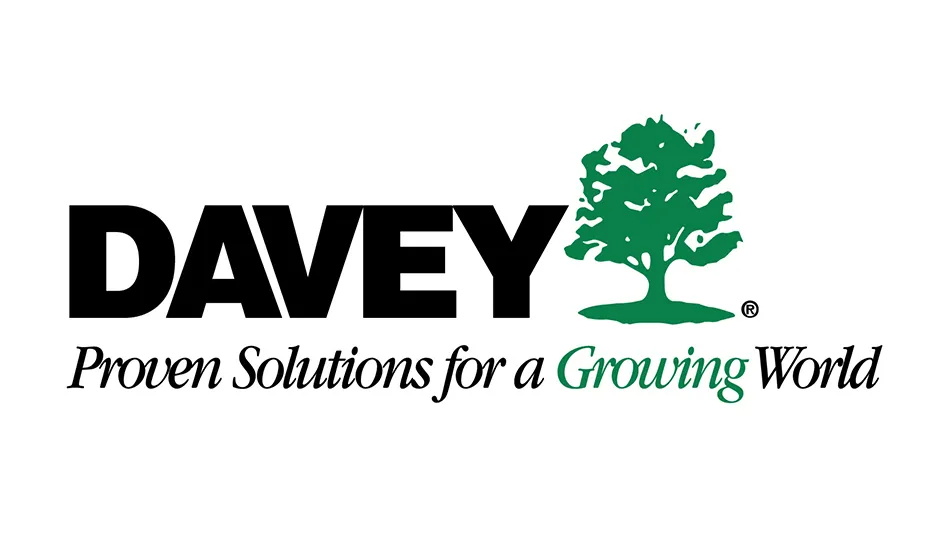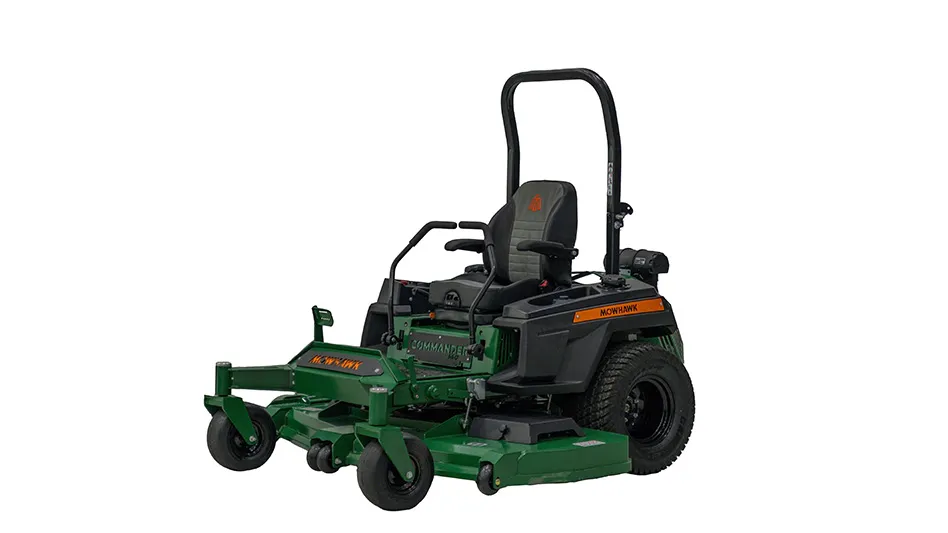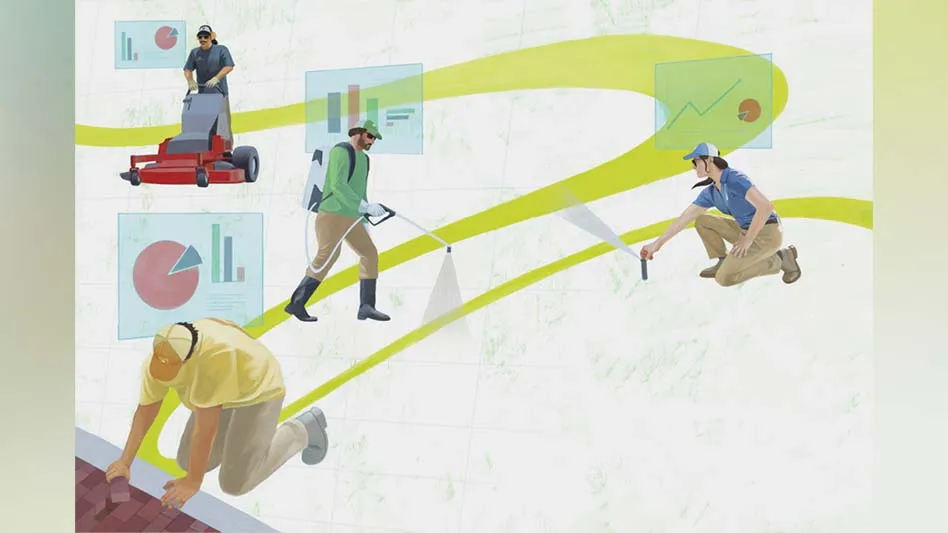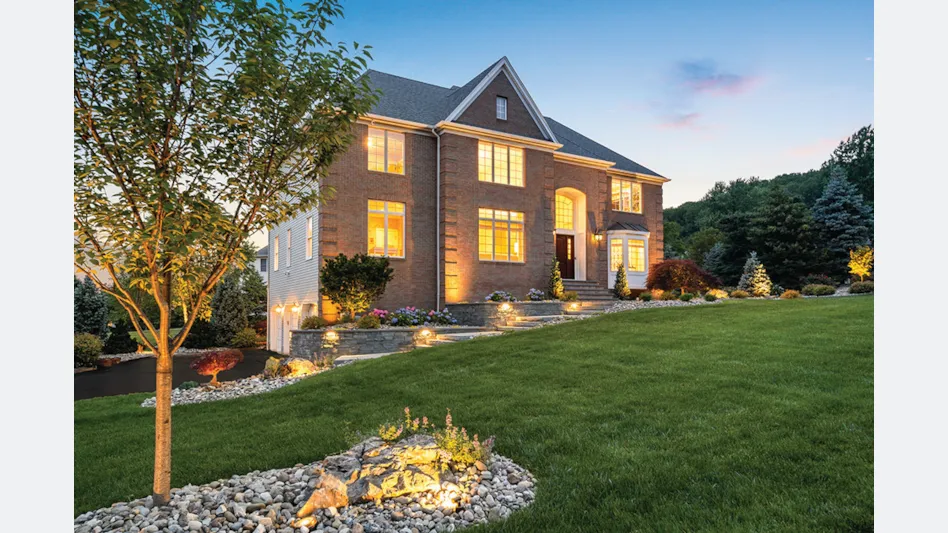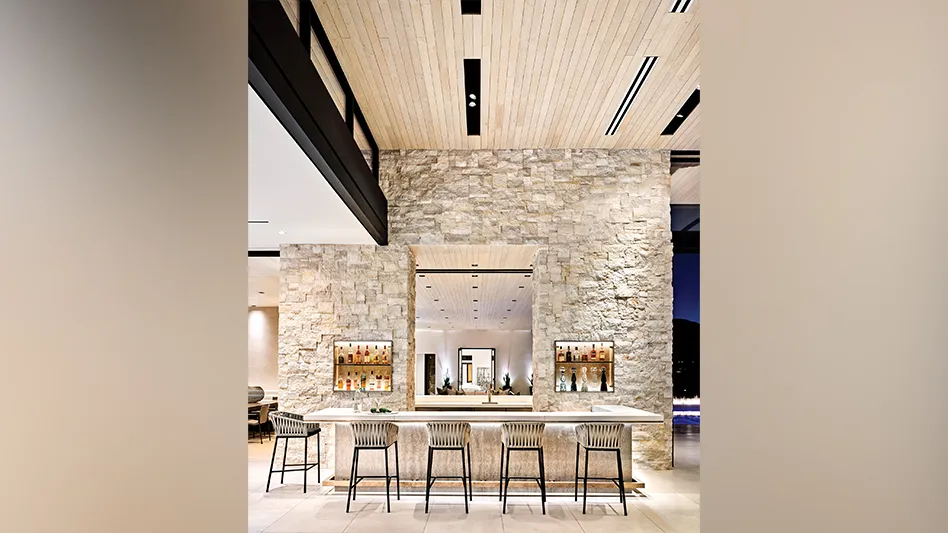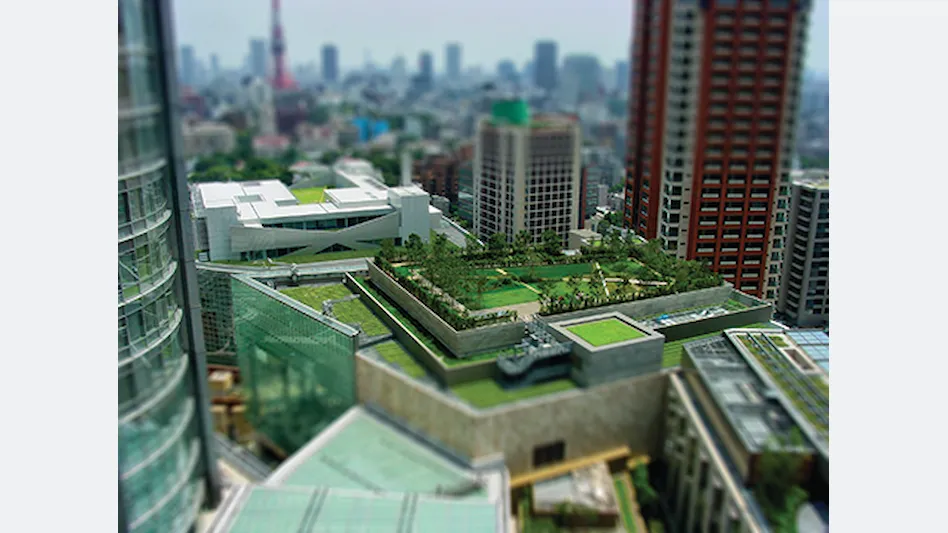
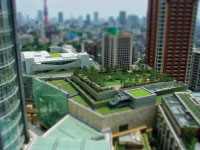 Much has been stirring about green roofs. These horticultural plantings can be simple or complex, but all have some key elements that make them exciting to contractors and building tenants as well. Sometimes they are referred to as vegetated roofs, living roofs or eco roofs.
Much has been stirring about green roofs. These horticultural plantings can be simple or complex, but all have some key elements that make them exciting to contractors and building tenants as well. Sometimes they are referred to as vegetated roofs, living roofs or eco roofs.
Most of the energy spent to date is with commercial facilities, although the concept is very contagious and it’s spreading to residential as well. Some exquisite and unique architectural statements have been shaping the new landscape. It’s up to you to decide if this is for you. I will cover only the basics in this article so hold on as we figure ways to possibly cover some 40-50 percent of your cities impermeable surfaces.
A group effort.
It’s up to you to work with your client who may bring in other professionals such as landscape architects or engineers. These allied professionals can help you and reinforce your points.
Engineers and architects are going to calculate weight loads, and take some of the liability off you. Landscape architects are up to speed on the various planting methods, tray systems and aesthetics. This group will also calculate roof slopes and drainage issues.
To be successful you’ve got to get with the lingo and learn the terminology.
We are speaking about aesthetic improvement, waste diversion, increasing roofing membrane longevity, storm water retention and buzzword terminology like reduction of the Urban Heat Island effect. There are many other benefits and health considerations to examine and discuss with your clients.
Green roof technology is new and it keeps evolving. Just as we learned the best practices of landscape maintenance and efficiencies, we now have to examine a potential portal for new business. This work, though, does have competition – other trades are watching just as intently, in fact keenly. Roofers, greenhouse/nurseries and others are fast trying to adapt systems to cover roofs.
Planting techniques and styles.
There are approximately four styles currently in use for us to study. They are:
Intensive roofs. Most of us have seen plantings on roofs for years and referred to them merely as a roof planting.
Most likely, what you noticed were a type of intensive roof. This style is popular and is most likely designed to withstand significant weight loads. These roofs would be seen on parking garages, terraces and areas where large trees, plants and even water features could be incorporated.
Start looking around at the types- notice the soil volume on this type of planting which can be quite thick, perhaps measured in feet of soil substrate rather than inches. People and autos possibly may share the use of this space with plant material.
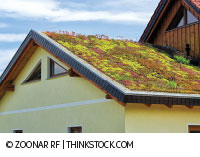 Extensive roofs. What you may automatically think of as a true green roof might have a thin membrane and be a lighter weight material along with a low water use planting. This style is commonly referred to as extensive roofs since they are engineered with multiple layers of soils, capillary matting all above the watertight roof membrane.
Extensive roofs. What you may automatically think of as a true green roof might have a thin membrane and be a lighter weight material along with a low water use planting. This style is commonly referred to as extensive roofs since they are engineered with multiple layers of soils, capillary matting all above the watertight roof membrane.
A typical plant used here could be a grass, moss or sedum. Of course, regional climatic tolerances must be taken into effect. This is where the landscape professional should shine.
Total soil depth on these types of systems are only 3-6 inches. Generally people cannot walk on this roof.
Modular roofs. These are a type of grid system that locks together and forms an instant planting. There are great advantages to this for the client as they do not have to wait for the plant material to grow in, which can take a considerable amount of time depending on your geographic location.
Soil depths can vary based on the thickness of the system and range from 5-8 inches. Remember, the more soil, the higher weight load you will need. A really great advantage of this system is that one can grow the modular sections elsewhere. Replacements can just be plugged in to a design easily and a non-pedestrian installation as well.
Loose-laid roofs. Simply the soil material is built up in layers over the roof membrane. It can be thicker with actual soils. Actual soil depth will be determined by the roof weight load, design and plantings desired.
Costs.
Of course this is a tough one to wrap up since there are so many variables. Generally though, an intensive roof is the most expensive (makes sense since the soil is thicker and the plants are larger). They can run $25 - $250 per square foot.
Extensive roof styles may be in the range of $20 - $75 per square foot. Modular systems vary greatly since they are different substrates, plant sizes and soil depths, which are not all consistent. Loose laid systems also fit into this cost category. Other factors that will fit into the financial areas are the maintenance issues, irrigation, replacement program and length of contract.
Most, if not all installations, should have a minimum of a one-year guarantee policy with specifications. If this is an unknown factor, tread carefully, as your time is a significant cost factor. Here also we should mention the installation crew, cooperation with existing trades on site may be a factor in pricing the project.
Safety.
It goes without saying, safety needs to be mentioned. You are working on a roof. Your insurance company must be told of the hazard change. Workers need to be OSHA compliant, wearing hard hats and tying off, are not optional areas. There may even be city ordinances that may need to be adhered to. Soil many times is lifted by crane and competent operators are a necessity.
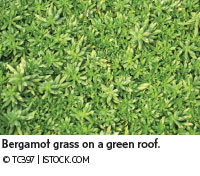 Green Roofs are here to stay. Europe has been embracing them for years and is ahead of the United States. Who can ignore the benefits of both human psychology, and environmentally they even lower fire insurance risks in Europe.
Green Roofs are here to stay. Europe has been embracing them for years and is ahead of the United States. Who can ignore the benefits of both human psychology, and environmentally they even lower fire insurance risks in Europe.
We think of a new green roof as Picasso would a blank canvas. I encourage you to explore, create and maintain the next window of landscape services. Watch your costs, the safety angles and sign up for a registered training program to have the latest technology.
Go out and sell, design and create better human biophilic connections.
The author is a registered trainer with the Green Plants For Green Buildings Association and owner of Raimondi Horticultural Group. Additional information and details for this article have been provided by the Green Plants For Green Buildings Association.
We covered the green roof market in our July 2011 Sustainability Report. Visit, bit.ly/llgreenroof and learn how contractors viewed the service then, and the lessons they learned installing the projects.

Explore the April 2014 Issue
Check out more from this issue and find you next story to read.
